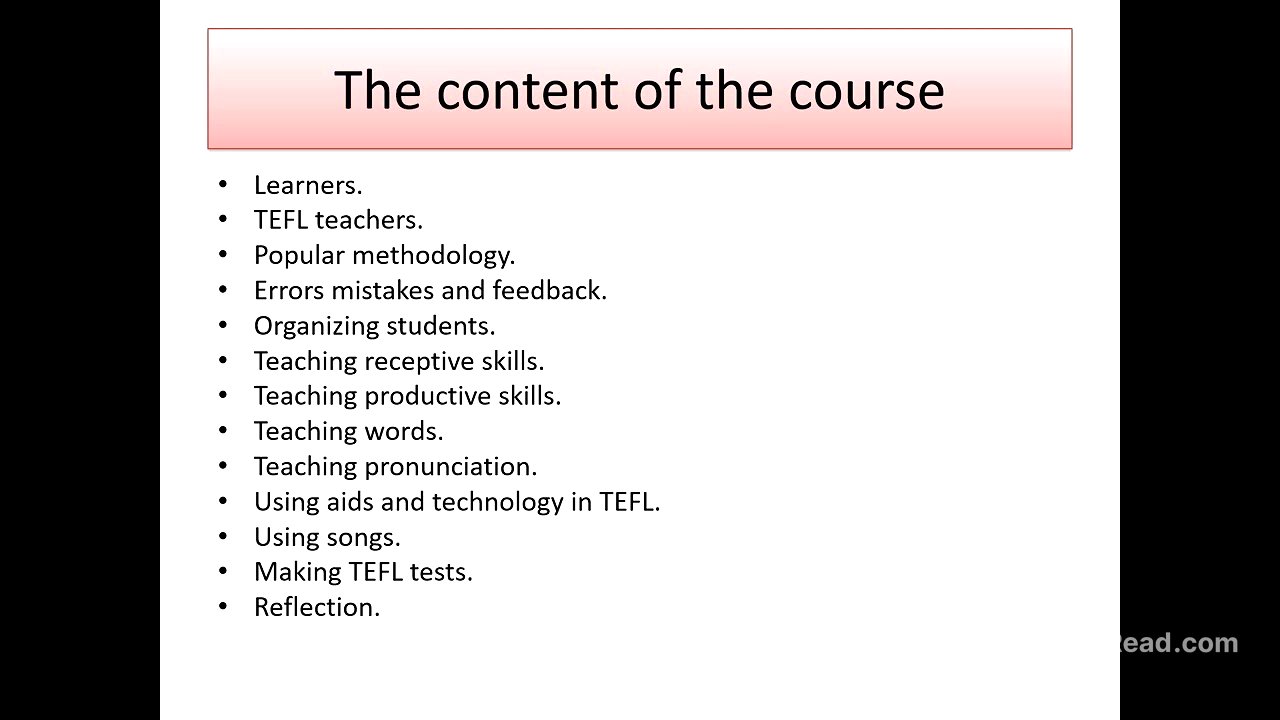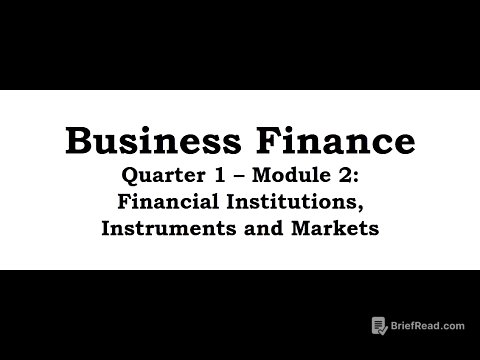TLDR;
This lecture serves as an introduction to the course "Teaching English as a Foreign Language." It outlines the course's main topics, including understanding learners, teaching methodologies, error correction, skills teaching, vocabulary and pronunciation, technology integration, and assessment. The lecture also covers course references, evaluation criteria, and study tips for success. Key points include the importance of knowing students, mastering teaching competencies, and using various techniques to engage students and enhance their language skills.
- Course Overview
- Key References
- Assessment and Grading
- Study Tips
- Important Acronyms
Course Introduction and Overview [0:08]
The lecture introduces the main topics of the course, which aims to provide an overview of teaching English as a foreign language. It emphasizes preparing students to evaluate and develop their objectives for the course, setting clear goals for themselves. The lecture also covers course references, explaining how students will be evaluated based on the academic affairs philosophy of Atil Asar University. It provides advice on how to study the course effectively, enhance teaching skills, and improve knowledge, especially in teaching English to Palestinian students.
Key Topics in TEFL [2:21]
The course will address several key areas in teaching English as a Foreign Language (TEFL). It will explore the characteristics, readiness, and attitudes of early learners towards learning English, focusing on how to capture their attention using various teaching techniques, strategies, activities, and aids throughout the lesson. The course will also cover the essentials of teaching foreign languages, including how to teach productive and receptive skills, and create activities that stimulate multiple intelligences and maintain student interest. It also focuses on the competencies needed to deliver creative lessons.
Methodologies and Error Correction [4:03]
The lecture discusses common methodologies in TEFL, emphasizing the importance of understanding the history of foreign language teaching. It briefly touches on methodologies such as Total Physical Response and the Communicative Approach. A significant focus is placed on error correction and feedback, highlighting the teacher's role in helping students overcome errors to master the foreign language. The lecture also covers how to provide effective feedback, both positive and negative, to students.
Skills Teaching and Classroom Techniques [5:17]
The lecture addresses student organization during lessons, discussing whether students should work individually, in pairs, or in groups, and how to vary these arrangements. It covers teaching receptive skills (reading and listening) and productive skills (speaking and writing), outlining how to teach these four main language skills using different frameworks. The lecture also includes techniques for presenting new vocabulary, reviewing words, and helping students understand word meaning, form, and usage. Additionally, it covers teaching pronunciation, correcting student pronunciation, and using various pronunciation skills and activities.
Technology Integration and Assessment [7:05]
The lecture emphasizes the use of technology in teaching English as a foreign language, especially in the context of the COVID-19 pandemic. It discusses creating engaging virtual environments and using songs to allow students to practice the language. The final topic covers how to evaluate students and their performance to determine if the lesson objectives have been achieved and if appropriate procedures were followed. The results of tests help teachers understand their performance and how students are learning.
Reflection on Teaching [10:04]
The lecture highlights the importance of reflecting on teaching practices, including evaluating performance during the lesson and student performance. Teachers should assess their actions in achieving lesson objectives and evaluate student learning to determine if the lesson's goal was met. Identifying a significant moment or something appreciated during the lesson, and explaining why, is crucial. Similarly, identifying and explaining dislikes helps in improving future lessons. It also involves considering new teaching aids, student organization, and the effectiveness of individual, group, or pair work. Positive feedback, clear instructions, and varied activities at different stages should be justified, with suggestions for future improvements.
Course References [11:40]
The primary reference for the course is "Practice Teaching English" by Jeremy Harmer, which includes new trends in TEFL and presents knowledge systematically. This book offers samples for teaching each skill and creating lesson plans. It covers grouping students, teacher development, handling learners, understanding individual differences, and overcoming these differences. The English for Palestine curriculum, specifically for grades 5-12, will also be used. Another reference is the TIFl Teacher's Guide for new English teachers, which can be used to learn more about specific aspects of teaching English.
Assessment and Grading [15:31]
The assessment for the course includes a midterm exam (20 marks) and a final exam (60 marks). The remaining 20 marks will be based on two assignments, one before the midterm and one after. The first assignment involves writing a summary, answering questions, or writing a short essay or report on the lectures. The second assignment requires writing a lesson plan for one receptive skill and another for one productive skill. Guidance and models for creating these lesson plans will be provided.
Tips for Studying the Course [18:58]
To study this course effectively, set a clear goal, such as developing teaching skills and knowledge. Attend all online lectures, take notes, write summaries, and identify key points. Answer the questions provided in each lecture and watch related videos on YouTube about teaching English as a foreign language. Practice critical thinking, especially when planning lessons, and reflect on and critique lesson plans to enhance teaching skills. Love teaching and the learners, including struggling students, to help them improve. View teaching not just as a job but as a mission to empower students.
Key Acronyms in TEFL [22:27]
The lecture introduces several key acronyms relevant to teaching English as a foreign language. TEL stands for Teaching English as a Foreign Language, while TESL represents Teaching English as a Second Language. The distinction lies in the context: in Palestine, English is primarily used for academic purposes, making it a foreign language, whereas in countries like Canada, English is used in various societal institutions, making it a second language. Other acronyms include ELL (English Language Learners), L2 (English as a Second Language), FL (Foreign Language), L1, MT, and NL (First Language, Mother Tongue, Native Language). Frameworks for teaching productive and receptive skills include PDP (Pre-During-Post activities), ERF (Elicit, Remember, Fluency), and PPP (Presentation, Practice, Production). Methodologies such as CLL (Communicative Language Learning) and TBL (Task-Based Learning) are also mentioned, along with TPR (Total Physical Response).









